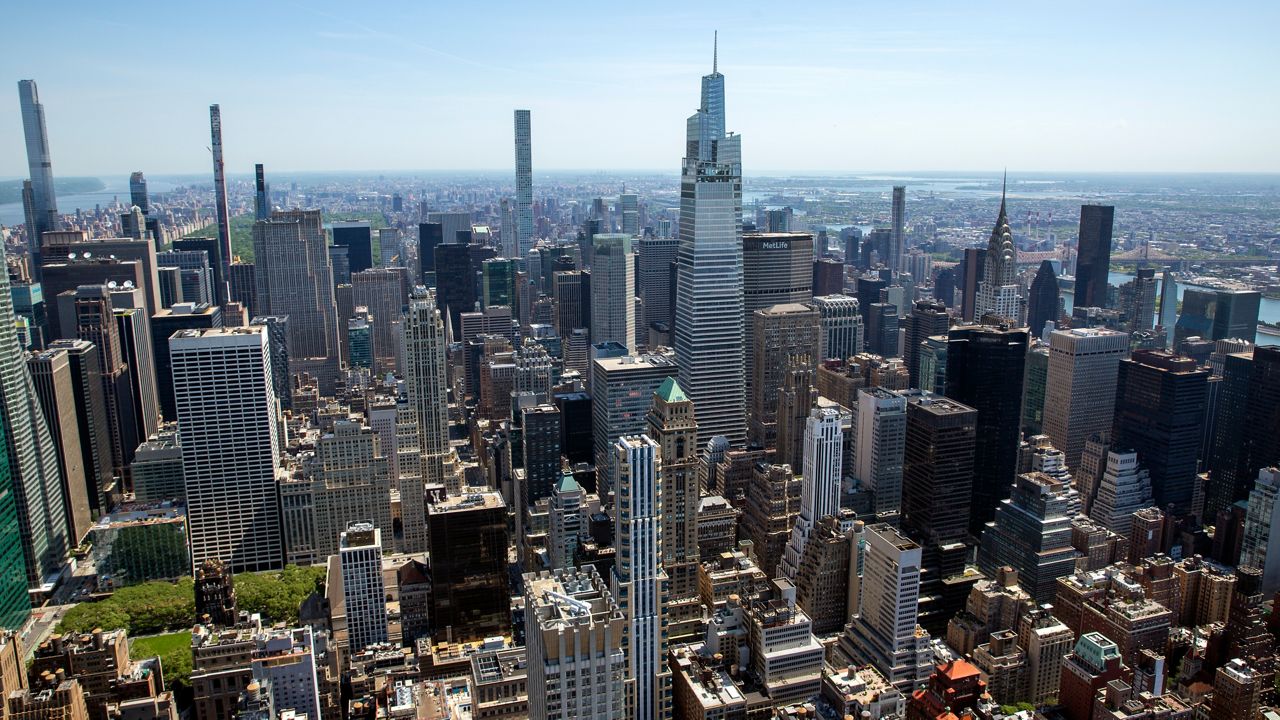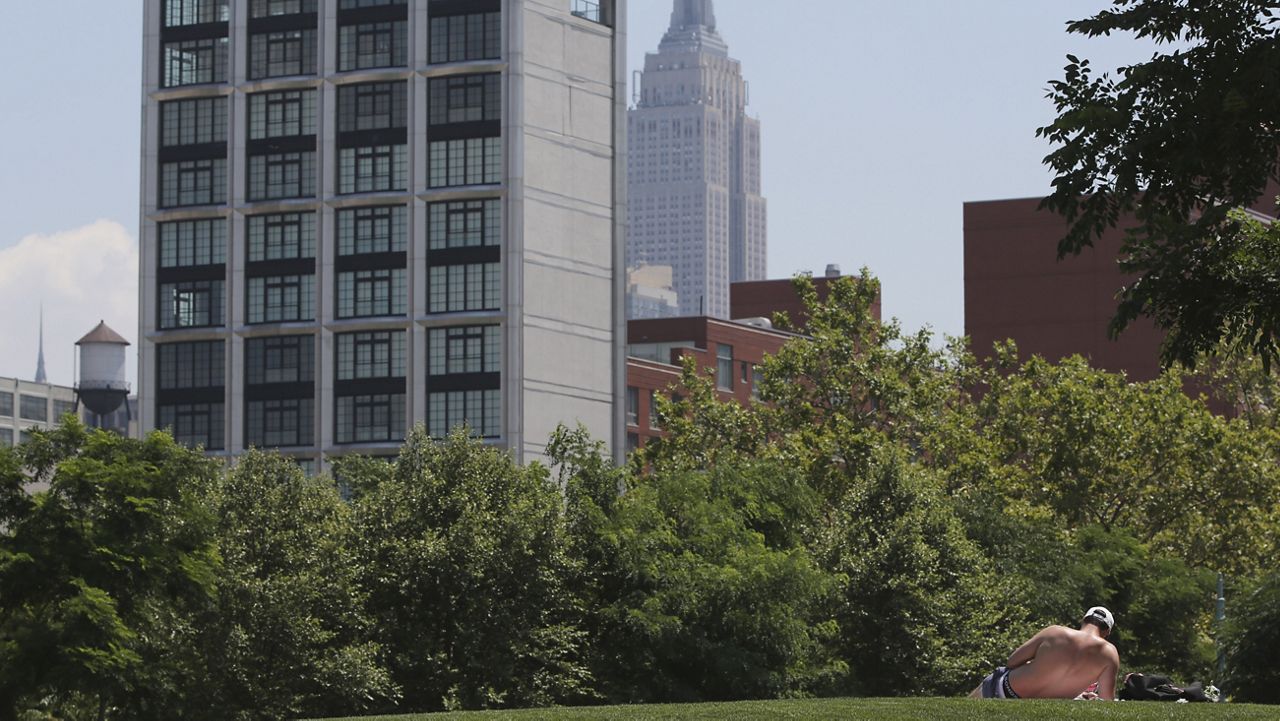An earthquake shook the densely populated New York City metropolitan area Friday morning, the U.S. Geological Survey said, with residents across the Northeast reporting rumbling in a region where people are unaccustomed to feeling the ground move.
The agency reported a quake at 10:23 a.m. with a preliminary magnitude of 4.8, centered near Lebanon, New Jersey, or about 45 miles west of New York City and 50 miles north of Philadelphia. U.S.G.S. figures indicated that the quake might have been felt by more than 42 million people.
What You Need To Know
- An earthquake shook the New York City metropolitan area Friday morning. The U.S. Geological Survey reported a quake at 10:23 a.m. with a preliminary magnitude of 4.8, centered near Lebanon, New Jersey
- At a news briefing, New York City Mayor Eric Adams said he had not received any reports of “major” infrastructure damage or injuries, but noted that assessments were ongoing
- A 4.8-magnitude quake isn't large enough to cause damage, except for some minor effects near the epicenter, according to the U.S. Geological Survey
- The U.S.G.S. also reported a 4.0-magnitude aftershock that was felt briefly around the tri-state at approximately 6 p.m. Friday.
The U.S.G.S. also reported a 4.0-magnitude aftershock that was felt briefly around the tri-state at approximately 6 p.m. Friday.
The New York City Police Department said no injuries had been reported in connection with the incident as of 1 p.m. At a news briefing, New York City Mayor Eric Adams said he had not received any reports of “major” infrastructure damage or injuries, but noted that assessments were ongoing.
“All of us felt in some way or another the earthquake that hit our city,” Adams said. “But New Yorkers should go about their normal day. First responders are working to make sure the city’s safe.”
At her own briefing, New York Gov. Kathy Hochul said she had directed the state's Office of Emergency Management to assess any damage to bridges and tunnels in the area.
"We're taking this extremely seriously, and here's why: There is always the possibility of aftershocks," Hochul said. "This is one of the largest earthquakes on the East Coast occurring in the last century."
U.S.G.S. reported two aftershocks following the start of Hochul's briefing: one at 12:14 p.m. with a preliminary magnitude of 2.0, and one at 12:32 p.m. with a preliminary magnitude of 2.2.
"Right now, it's most important that we have our structural teams out there, our engineering teams, surveying our bridges, our roads, any area there could be a fault line that is not easily detectable, to make sure that passengers on our rails as well as our commuters are safe," the governor said.
"I want to emphasize those were designed to withstand much stronger seismic impacts than we experienced today," Lieber said.A 4.7-magnitude earthquake rocked New York City and much of the Northeast Friday morning.
— NY1 Weather (@NY1weather) April 5, 2024
What do the different earthquake magnitudes feel like? @GuyBrownWeather breaks it down. pic.twitter.com/XlhDh34Heh
At the mayor's briefing, New York City Emergency Management Commissioner Zack Iscol said there was a “low likelihood” of experiencing any aftershocks following the quake, but advised New Yorkers to take precautions.
“If you are outside during an aftershock, please move to an open area, away from buildings, trees and power lines,” Iscol said. “If you are driving, pull over to a safe location.”
New Yorkers indoors should “drop to the floor, cover your head and neck and take cover under a solid piece of furniture next to an interior wall or in a doorway,” the mayor said. Iscol said city residents could call 311 to report any damage.
MTA President and CEO Janno Lieber said there were no disruptions to subway, Long Island Rail Road or Metro-North service.
"We're going to let riders know if there are any impacts to service, but there are none," he said. The MTA conducted preliminary inspections of the seven bridges it operates, he added.
"I want to emphasize those were designed to withstand much stronger seismic impacts than we experienced today," he said.
Ground stops were issued at John F. Kennedy International Airport and Newark Liberty International Airport after the quake, but not at LaGuardia Airport, Kathryn Garcia, New York’s director of state operations, said at Hochul's briefing.
“We’re getting more information, but we suspect it is because they were renovated more recently, and met higher standards,” Garcia said.
The Port Authority of New York and New Jersey said it was holding traffic into and out of the Holland Tunnel after the incident, noting that commuters should "expect delays."
Amtrak was still operating on a full schedule after the quake, but said it had implemented speed restrictions throughout the Northeast that were set to remain in effect until it completed track inspections.
New York City Department of Education press secretary Nathaniel Styer said the agency's building response teams were "working closely with our agency partners, including [New York City Emergency Management], to ensure all of our students and staff are safe."
"At this time, there is no indication that our buildings were compromised, and our facilities staff are quickly and thoroughly inspecting buildings to ensure safety," Styer wrote on social media. "The safest place for our kids right now is in our schools, schools are operating as normal."
White House press secretary Karine Jean-Pierre, meanwhile, said President Joe Biden had been briefed on the incident, adding that his team was "monitoring potential impacts."
"The White House is in touch with federal, state, and local officials as we learn more," she said.
Biden said he spoke to New Jersey Gov. Phil Murphy about Friday's earthquake. The White House said the administration would provide help if needed.
In midtown Manhattan, the usual cacophony of traffic grew louder as motorists blared their horns on momentarily shuddering streets. Some Brooklyn residents heard a booming sound and their building shaking. In an apartment house in Manhattan’s East Village, a resident from more earthquake-prone California calmed nervous neighbors.
People in Baltimore, Philadelphia and other areas also reported feeling the ground shake.
Earthquakes are less common on the eastern than western edges of the U.S. because the East Coast does not lie on a boundary of tectonic plates. The biggest Eastern quakes usually occur along the mid-Atlantic Ridge, which extends through Iceland and the Atlantic Ocean.
Quakes on the East Coast can still pack a punch, as its rocks are better than their western counterparts at spreading earthquake energy across far distances.
A 4.8-magnitude quake isn't large enough to cause damage, except for some minor effects near the epicenter, U.S.G.S. posted on the platform formerly known as Twitter.
Earthquakes with magnitudes near or above 5 struck near New York City in 1737, 1783 and 1884, the USGS said. And Friday's stirred memories of the Aug. 23, 2011, earthquake that jolted tens of millions of people from Georgia to Canada. With an epicenter in Virginia, it left cracks in the Washington Monument and rattled New Yorkers ahead of the 10th anniversary of the Sept. 11 terror attacks.
Registering magnitude 5.8, it was the strongest earthquake to hit the East Coast since World War II.








